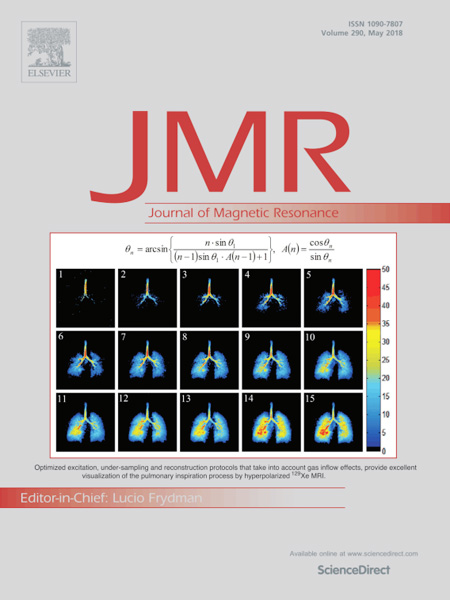|
|
WIPM Achieves Rapid, High-resolution and Dynamic Imaging of Human Lungs with Hyperpolarized Gas MRI |
| Author: |
|
Update time: |
2018-06-22 |
|
 |
Recently, the research group in Wuhan Institute of Physics and Mathematics (WIPM) led by professor Xin Zhou proposed a new method for rapid magnetic resonance imaging (MRI) of human lung, using homebuit scientific instruments. This method can achieve high-resolution and dynamic hyperpolarized (HP) xenon MRI of human lung with a very high speed of less than half a second for a slice, providing a sharp tool for potential early detection of major pulmonary diseases. The research paper was published as a cover article in the Journal of Magnetic Resonance .
Lung diseases, such as lung cancer and chronic obstructive pulmonary disease (COPD), are great threat to human health and are becoming more and more serious with the aggravation of air pollution. MRI is widely used for diagnostic and therapeutic purposes because of its clinical safety and superior soft tissue contrast in comparison to other imaging modalities, such as computed tomography or X-ray. However, the conventional proton MRI is rarely utilized for the lung airspace due to the very low density of 1H. It is known that the visualization of ventilation process is helpful to provide unique information about lung physiology and pathophysiology, but the accurate depiction the dynamic process of lung ventilation is very challenge. Therefore, it is vital to develop an efficient method to visualize the lung ventilation process.
Based on the homebuilt HP gas MRI system, the research group led by Professor Xin Zhou lighted up human lungs successfully. Further more, the researchers found that the gas-inflow effects may limit the image quality when HP gas is inhaled into the lung continuously. These effects induce complicate changes of signal intensity and bring unfavorable factors, such as noise and artifacts, in both sampling and reconstruction processes. This is an important factor that obstructs the accurate depiction of the dynamic process of pulmonary ventilation. To develop an efficient dynamic HP gas MRI method, a variable-flip-angle strategy was designed by researchers. In addition, an effective reconstruction algorithm considering the low-rank, sparse and gas-inflow effects constraints was developed to reconstruct dynamic MR images. In this way, the resolution and quality of dynamic MR images was significantly improved. The proposed method can acquire dynamic HP xenon MR images with a spatial resolution of 3 mm and a temporal resolution of 445 ms/slice, which is superior to the state-of-art pulmonary dynamic HP 129Xe MRI.
Ph. D student Sa Xiao and associate professor He Deng are co-first authors of this article and professor Xin Zhou is the corresponding author. This work was supported by National Natural Science Foundation of China, National Program for Support of Eminent Professionals (National Program for Support of Top-notch Young Professionals), National Key R&D Program of China and Key Research Program of Frontier Sciences, CAS. |
|
|